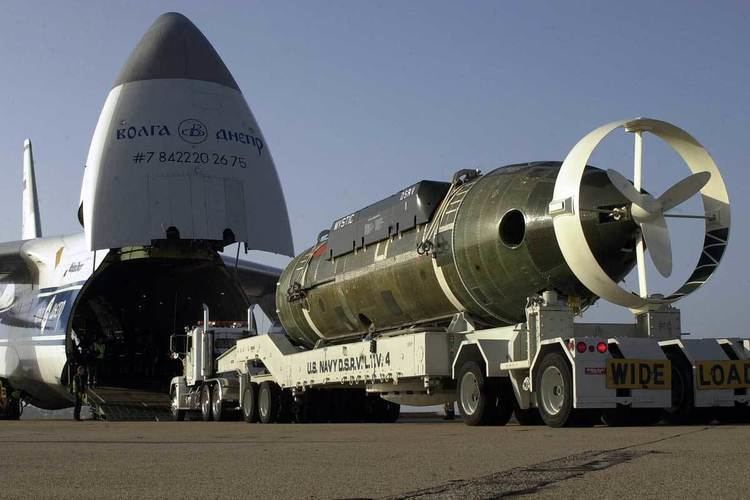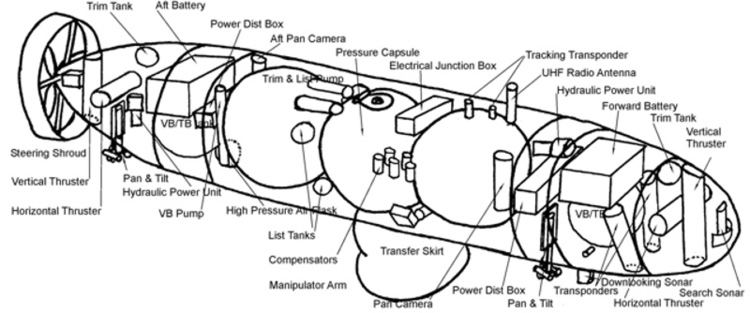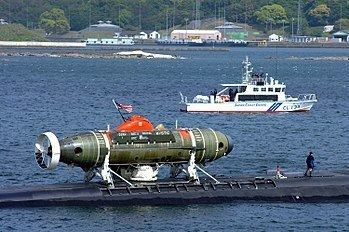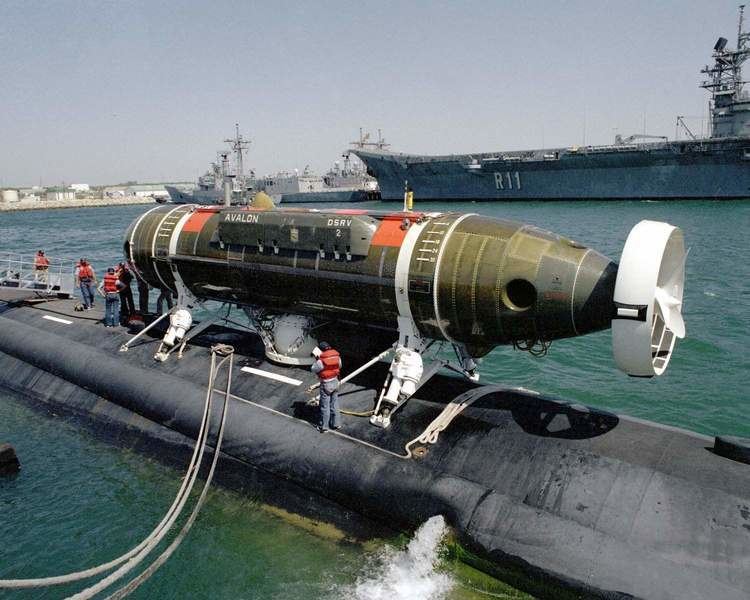 | ||
A Deep Submergence Rescue Vehicle (DSRV) is a type of Deep Submergence Vehicle used for rescue of downed submarines and clandestine missions. While DSRV is the term most often used by the United States Navy other nations have different designations for their vehicles.
Contents
- Australian models
- Chinese models
- European models
- Italian models
- Japanese models
- Korean model
- Russian models
- Singapore model
- United Kingdom models
- United States models
- Operation
- References

Australian models
ASRV Remora ("Really Excellent Method Of Rescuing Aussies") was the Australian navy's DSRV. It is based on a diving bell design.
Chinese models

The People's Republic of China has three Dajiang (大江) class submarine rescue ships. Each ship is equipped with two DSRV. The lead ship of the Dajiang class is the Changxingdao (長興島, 861).
European models
France, Norway and the UK share the NATO Submarine Rescue System programme.

Swedish Navy has Submarine rescue ship HMS Belos (A214) which can carry Swedish submarine rescue vessel URF (wiki currently only available in Swedish) as well as British LR5.
Italian models
Italy operates Italian ship Anteo (A5309) equipped too with the SRV-300 submersible in a submarine rescue role

Japanese models
The Japan Maritime Self-Defense Force operate two DSRVs with dedicated mother ships.
Korean model

The Korean navy operates a submarine rescue ship called Cheong Haejin. It has a dedicated mother ship. The model is based on a modified British design.
Russian models
Russia is believed to have one vessel of the Bester class and five of the Priz class, which was involved in the failed attempt to rescue the crew of the Kursk.
Singapore model
MV Swift Rescue, launched 29 November 2008, is Singapore's first and only submarine recovery vessel. It is equipped with a deep submergence rescue vehicle.
United Kingdom models
The United Kingdom operates the LR5 submersible in a submarine rescue role. It previously operated the Slingsby Engineering built LR3.
United States models
The mode of deployment for these United States submersibles is: fly the vehicle to the port closest to the incident; attach the vehicle to a host submarine; the host submarine travels to the incident site; rescue. The DSRVs were originally designed to work with USS Pigeon and USS Ortolan, but those two vessels have since been decommissioned and replaced by the Submarine Rescue Diving Recompression System.
Operation
The Deep Submergence Rescue Vehicle (DSRV) is designed to rescue 24 people at a time at depths of up to 600 m (2000 ft). Their maximum operating depth is 1500 m (5000 ft). Power is provided by 2 large batteries, one fore, and one aft that power the electrical, hydraulic and life support systems. The DSRV uses mercury in a completely sealed system to allow themselves to match any angle (up to 45°) in both pitch and roll so as to "mate" (attach) to a downed submarine that may be at an angle on the sea floor. The DSRV is capable of being transported by Air Force C-5 to anywhere in the world within 24 hours.
It is then loaded onto a "Mother Submarine" (MOSUB).
The MOSUB then carries the DSRV to the rescue site where several trips are made to rescue all personnel.
Rescue is usually accomplished by ferrying rescuees from the stranded sub to the MOSUB, however, they can also be taken to a properly equipped surface support ship.
In addition to a number of U.S. Navy submarines being outfitted for MOSUB capabilities, several NATO countries also have submarines outfitted to carry the U.S. Navy DSRV for rescue capability as needed. Both the UK and French Navies have such submarines.
The interior of the DSRV is composed of 3 spheres. The forward sphere is the "Control Sphere" where the DSRV's pilot and copilot operate the vehicle. The two aft spheres (known as Mid Sphere and Aft Sphere) are used to seat the rescuees or to install equipment for additional operations. Maneuvering is accomplished using 4 thrusters and one main propeller.
